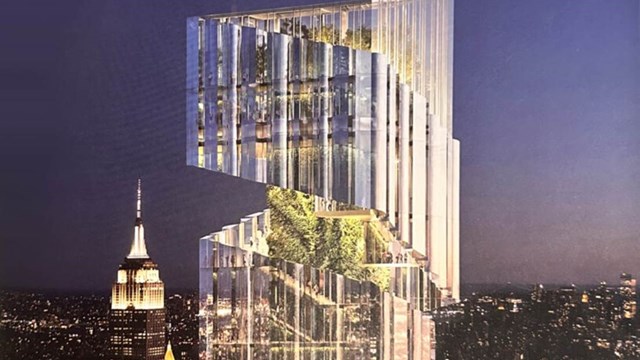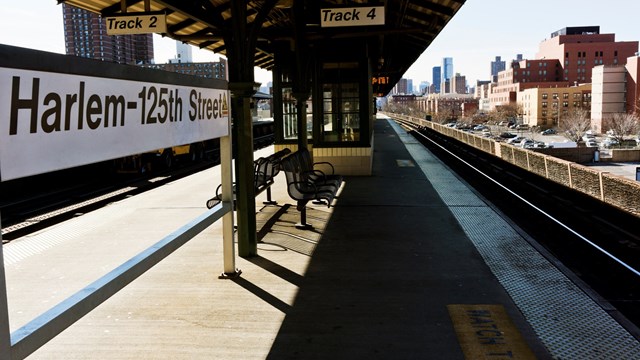The area of New York City that makes up the Lower East Side comprises only four square miles, but is one of the city's most densely historical spots. Bounded by 14th Street on the north, Catherine Street on the south, Broadway on the west and the East River making up the eastern border, one doesn't have to walk far to get a feel of the neighborhood. From turn-of-the-last-century tenement buildings to the rapidly expanding condominium market today, on the Lower East Side, only one thing remains the same: the neighborhood is always changing.
During the 1880s, the Lower East Side became a mecca for millions of immigrants from over 20 nations. African Americans freed from slavery, Irish immigrants forced out of their homeland by the potato famine, Jews seeking asylum from religious persecution, and Germans and Southern Italians are just a few of the groups that fled their countries to find a better way of life in America.
For over forty years, the Lower East Side saw a mind-boggling increase in population until harsh laws limiting immigrant migration were put into place. By that time, however, the face of the area (and all of New York City) had changed forever.
According to Nikia Redhead, public relations and marketing coordinator for the Lower East Side Tenement Museum, the reason so many immigrants chose the Lower East Side was obvious. "In nineteenth and early-twentieth-century, New York had the highest concentration of jobs - especially unskilled jobs, and especially on the southern tip of Manhattan Island. With its relatively low rents and close proximity to work, the Lower East Side was the perfect place for newly arrived immigrants to settle."
The physical landscape of the Lower East Side changed as fast as its ethnic composition. The wooden buildings and dirt streets passed with the American-born residents. In the 1850s and 1860s, five-and six-story brick and stone tenements were built in large numbers to accommodate poor immigrants in search of cheap housing. Omnibus horse lines traversed the neighborhood carrying passengers between uptown and downtown, and east and west.
Redhead says the buildings that held the living quarters of the over 15,000 families helped shape the look of the area. So-called "dumbbell" apartment buildings - so named because of their shape and inner-courtyard air shafts, mandated by law after 1879 - and "˜new law' tenements rose in successive waves amidst older housing stock like 97 Orchard Street, which houses the Tenement Museum.
The construction of the subways also contributed to the personality of the neighborhood. Elevated railways began to rumble over Allen Street to First Avenue, as well as the Bowery around 1880. This unmistakable character is one of the many reasons the Lower East Side is getting a lot of attention these days.
"From the outside," says Redhead, "many of the tenement buildings lining the Lower East Side's streets look just as they did a century or more ago. While some facades have been repainted and restored, many quite vividly evidence the patina of age. On the other hand, the inside of many tenement buildings have been gut renovated. Most now have bathrooms within each apartment instead of in the hallway, for example. Many - but certainly not all - have been renovated. Some of the existing tenement housing stock on the Lower East Side remains in serious need of repair and renovation."
As the 19th century wore on into the 20th, the Lower East Side maintained its reputation as an "edgy" and often dangerous place. Due to the increase in illegal drug use and sale in the area, the 1950s brought petty crime and gang violence to the streets. Since the area was considered unsafe, rents were therefore cheaper than most places and artists of all kinds began to gravitate to the area and set up studios. The neighborhood, long a primarily Orthodox Jewish and Italian stronghold, began to be home to large numbers of Latin American immigrants, who re-christened it "Loisaida," Spanish-English shorthand for "Lower East Side."
The "Beat" poets, first located in the West Village began to relocate farther east when tourists began to crowd their old home. Since that move, artists and "fringe dwellers" continued to find a place in the affordable but often risky area. In the 1970s, the punk rock movement found a home in the Lower East Side, what with the small, dingy clubs that dotted the landscape and the heavy drug trade. Crumbling tenements long abandoned by landlords unable or unwilling to invest in their upkeep were taken over by groups of squatters - some artists, others homeless - who established communal living spaces in the boarded-up buildings.
In the late 1980s and early "˜90s, squatter protests further contributed to the neighborhood's rebellious, counter-cultural reputation. Media attention was focused on the area when large groups of squatters stood outside the entrance to the hit musical "Rent," protesting the marketing and mass consumption of what was, in their experience, a often bleak and decidedly hard way of life. A robust gay subculture was also flourishing in the neighborhood at this time, and drag shows and festivals such as Wigstock - which still takes place annually in Tompkins Square Park - made the Lower East Side and its abutting areas in the East Village a part of Manhattan people either loved or loathed.
But by the mid-1990s, things began to change drastically for the Lower East Side. In an article dated August 29th, 1997, the New York Times dubbed the area, "an appealing address for young professionals seeking a less costly alternative to neighborhoods like Greenwich Village and Soho."
Between that and the massive crackdown on the drug trade, the rousting of squatters, and rising rents all over Manhattan largely due to the policies of former Mayor Rudy Giuliani, gentrification of the Lower East Side began in earnest.
David Alloch, a broker with Prudential Douglas Elliman, says that the primary reason for the drastic change is the decrease in crime. "Ten years ago, the Lower East Side was not nearly as safe as it is now. It's a cliché, but the Lower East Side is what Soho was ten years ago or what the Meatpacking District was ten years ago."
Indeed, the trendiness factor of the Lower East Side is growing. Popular recording artist Moby has an all-organic tea café in the area - Teany at 90 Rivington Street - and dozens of art galleries, upscale restaurants, and tony bars have opened in the area, supplanting the seedy rock clubs, threadbare residential hotels, and run-down tenements.
This newfound safety and infusion of arts and nightlife has had much to do with residential developments that are pouring into the neighborhood.
"There are two kinds of developments happening right now," says Alloch. "There are the little ones - the developments by entrepreneurs at such addresses as 165 Eldridge, 115 Allen, and 50 Orchard, to name a few - and there are the big buildings, like the Avalon Chrystie on the corner of Houston and Second Avenue. There will be 361 units in total - 20 percent reserved for low income tenants, and the rest at market value."
Alloch says that a 500-square-foot studio apartment at the Avalon Chrystie will rent for $2,250 a month, a 750-square-foot one-bedroom for $2,700. The 1,200-square-foot two-bedroom units go for a cool $5,000. Quite a change from the $10-a-month rents once charged to Beat poets and struggling artists in the area.
"It's an interesting phenomenon," says Alloch. "Pre-sales for condos are at about $800-per-square-foot - that's about the same as the Upper East Side. The thing about the Lower East Side is that you've got either really new people or people who have been in the area for years and years - the neighborhood is different in that sense."
These changes are seen as either good or bad, depending on what your personal situation is. Redhead, while she feels that gentrification is "neither wholly good or wholly bad," says that, "since the early 1990s, the pattern of gentrification that began in the area surrounding Tompkins Square Park in the East Village has been migrating inexorably southward. Over the course of the last decade, the Lower East Side has lost over 8,000 units of low-income housing, with a simultaneous loss of residents in the lowest income group and an increase of those in the highest income group."
"In addition," she continues, "rent levels have risen faster than household income in the neighborhood. Today, a studio apartment can rent for as much as $2,000 a month." Redhead says that because of this, hundreds of low-income families - many of them Hispanic - are unable to afford the neighborhood's rising cost of housing and have been forced out.
Alloch feels that no matter how you feel about it, there's no doubt the gentrifying of the Lower East Side is happening - and fast. The Second Avenue subway will be completed in a few years, and that will alter the neighborhood drastically, once a more convenient mode of public transportation is in place.
"The success of the Lower East Side in the next five years depends on the city's capacity to absorb wealth and new businesses. There's a lot of saturation on the West Side, and so people are moving east. If it's like Soho, it's going to be insane - that high velocity of transformation."
The climate of the Lower East Side has always been a volatile one - but maybe those days are slowly coming to an end. The next time you find yourself in the neighborhood, take the time to check out the Tenement Museum or dine at one of the many new restaurants in the area. See the changes firsthand and then decide if the Lower East Side is ready for a new chapter of history.







Leave a Comment